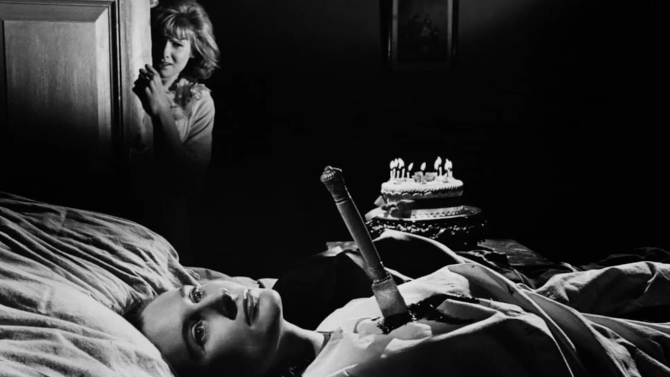
Night Terrors
Unlike most other memorable Hammer horror movies, the 1964 mystery thriller Nightmare, directed by Freddie Francis (perhaps better known as the cinematographer of films like David Lynch’s The Elephant Man and Martin Scorsese’s Cape Fear) eliminates all of the monsters for an old fashioned quasi ghost story... the piece deserving to be remembered up there with those Hammer horror films centered on vampires, resurrected corpses, and lycanthropes. Shot in shadowy black and white, the story follows struggling seventeen year old Janet (Jennie Linden), who is currently away from home living at a finishing school for girls.
-

Boulevard of Broken Dreams
Sunset BoulevardJuly 17, 2016With the steamy heat of summer upon us, it is time to revisit one of my favourite genres – the dark, seductive, hard-boiled stories of film noir (from the 1940's and 50's). Billy Wilder, one of the great directors of the twentieth century, created three classics that fall within this genre: 1944's Double Indemnity (which I have already reviewed), 1951's Ace In the Hole and the 1950 iconic motion picture Sunset Blvd. – which will be reviewed here today.
-

A Haunting Love Affair
The Ghost and Mrs. MuirMarch 22, 2016Every once and a while, a writer devises a ghost story that is not mere horror or thriller, but expands the eerie vibe to a more intimate otherworldly friendship or romance. Two of my favourites are the oddball buddy comedy Blackbeard’s Ghost (released by Disney in 1968) as well as the 1990 romantic dramedy simply titled Ghost. I now have a third excellent film to add to this rather abstract list – the 1947 motion picture The Ghost and Mrs. Muir.
-

Do Look Now
Don't Look NowMarch 8, 2016The horror genre has many incarnations. The two that seem to be most popular as of this point are the slasher flick (i.e. Saw) or the based-on-true-events-style ghost story – à la Paranormal Activity, The Conjuring and so on. From time to time we may see a more traditional, even Victorian-style ghost story such as Crimson Peak or The Woman in Black, but the film I am reviewing today is much harder to pigeonhole, as it is part searing psychological drama, which is then mixed with Gothic horror and a touch of thriller. It is Nicolas Roeg’s 1973 slow-burner of a picture, Don’t Look Now.
-
Vigilante Justice
 Gran TorinoHarry BrownMarch 1, 2016
Gran TorinoHarry BrownMarch 1, 2016I am excited to announce that a new feature has come to Filmizon.com – the ability to do a Dual/Duel movie review. I can think of no better way of putting the new set-up to the test than comparing one of the best films of 2008 – Clint Eastwood's Gran Torino, to a lesser known, but equally strong picture – 2009's Harry Brown, starring Michael Caine.
-

Journalist Takes Shocking Journey
Shock CorridorFebruary 26, 201610 days: that was how long it took to film the 1963 B-movie Shock Corridor. Originally advertized as an exploitation picture (and it does have some of those elements), Samuel Fuller’s film about a journalist who has himself committed to solve a mysterious murder is so much more than its original label.
-
Star Pick with Marcus Ovnell
 A Road Less TravelledArlington RoadFebruary 14, 2016
A Road Less TravelledArlington RoadFebruary 14, 2016As you probably read previously, Marcus Ovnell, the writer/director of the outstanding Swedish dramatic thriller The Break-In, explained that his favourite film of all-time was the 1990's classic Shawshank Redemption. Though he said that this was his clear favourite, he also highlighted a lesser known movie as one that I (and others) should watch – the 1999 thriller Arlington Road.


